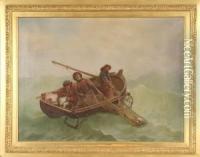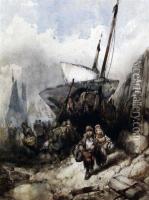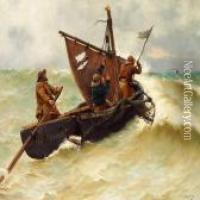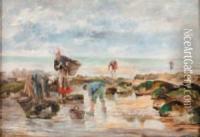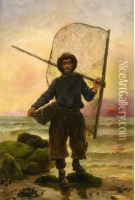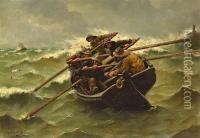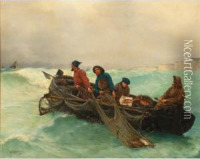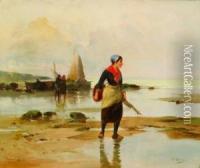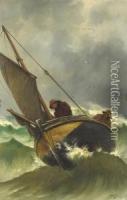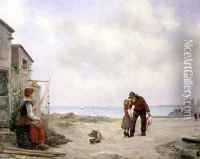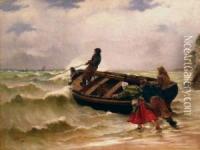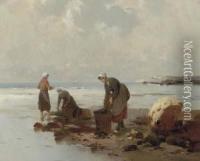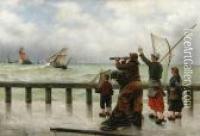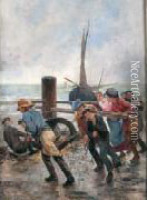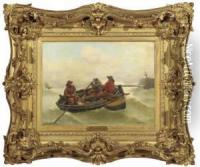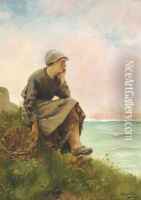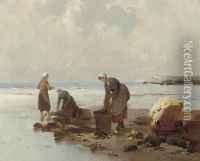George Haquette Paintings
George Haquette was a French painter known for his genre scenes and maritime paintings. Born in Paris on December 19, 1854, he grew up during a period when France was experiencing significant social and political changes. His artistic talent emerged at a young age, and he pursued formal art education at the École des Beaux-Arts in Paris. Under the tutelage of renowned artists such as Alexandre Cabanel and Isidore Pils, Haquette honed his skills in the traditional academic style.
During his career, Haquette became recognized for his ability to capture the essence of daily life, particularly the lives of fishermen and their families. His works often depicted the struggles and the modest beauty found in the everyday experiences of the working class. Haquette’s paintings resonated with the public due to their emotional depth and realism.
Exhibiting his work at the Paris Salon, an annual art exhibition held by the Académie des Beaux-Arts, Haquette gained acclaim and won several awards. His paintings became sought after by art collectors and were widely reproduced, contributing to his reputation as a painter of the people.
George Haquette's approach to art was influenced by the Naturalist movement, which sought to depict subjects with a sense of objectivity and truth. Although not as well-known today as some of his contemporaries, Haquette was admired in his time for his attention to detail and his ability to convey narrative through visual means.
Sadly, George Haquette’s life was relatively short; he died on August 27, 1906, in Paris. Despite his early death, he left behind a significant body of work that continues to be studied and appreciated by art historians and enthusiasts for its portrayal of 19th-century French life and culture.
